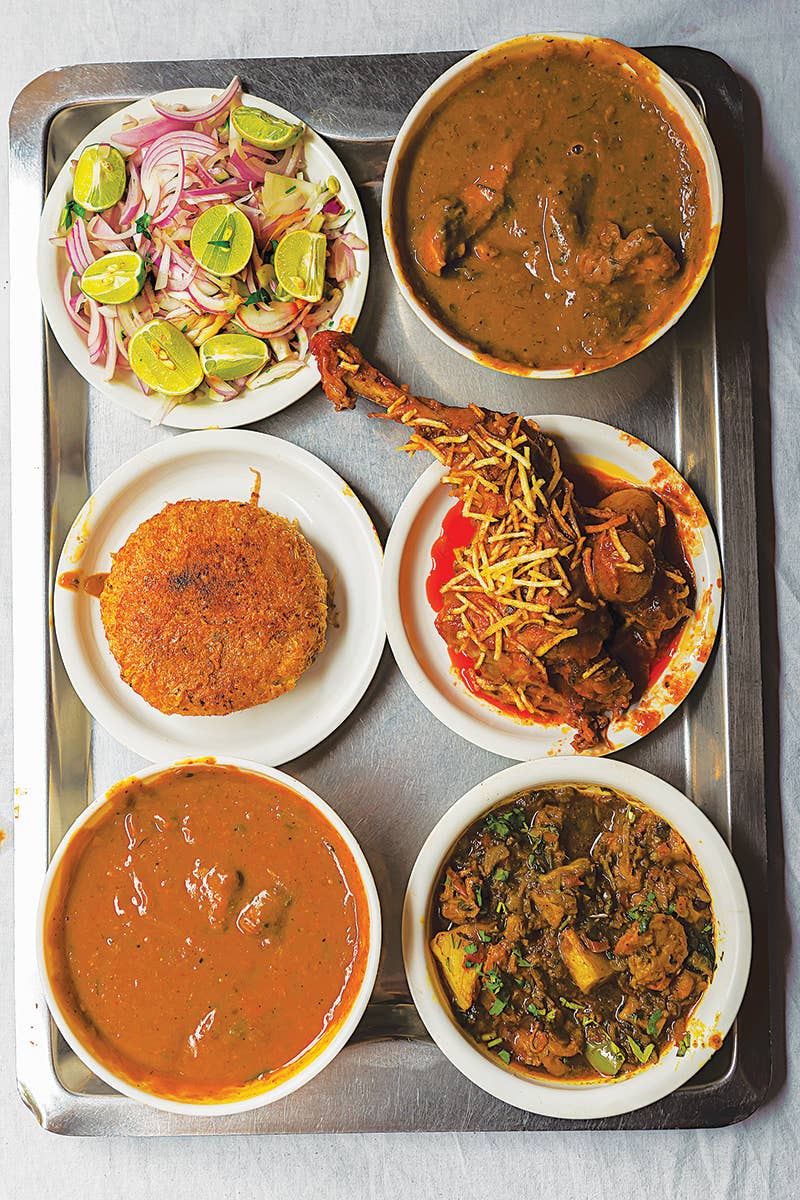
When I was growing up in Mumbai, Sunday lunch with my family was always dhansak: caramelized rice walled in by mutton kebabs and drowned in a dal cooked with green chiles and garlic and spiced with turmeric and cumin (top right). We ate it with a plate of condiments (top left) that included sliced onions, limes, and cilantro.
My family is Parsi, followers of the prophet Zoroaster who began immigrating to India around the eighth century from Persia. The cuisine still bears that ancient influence: meats and vegetables paired with sweet and sour flavors and lavished with diverse spices.
My Sunday family lunches are a thing of the past now. But when I pine for the old days, I make my way to Ideal Corner, a Parsi restaurant in Mumbai's Fort district, where most of the world's Parsis live. They serve kheema pattice, mutton-potato patties (middle left); veg dhansak, brown rice with dal and vegetables, like eggplant and pumpkin (bottom left); and kolmi papeto capsicum, prawns with tomatoes and chiles (bottom right). I always order a dish my mother used to make: jardalu ma marghi, chicken and dried apricots in gravy (middle right). The sharp, sweet notes of the fruit, and the spices that infuse the rich gravy—chiles, cinnamon, ginger, and cardamom—make for a complex interplay of tastes: sweet, sour, piquant. The currents of flavor transport me back through the years.
Keep Reading
Continue to Next Story










